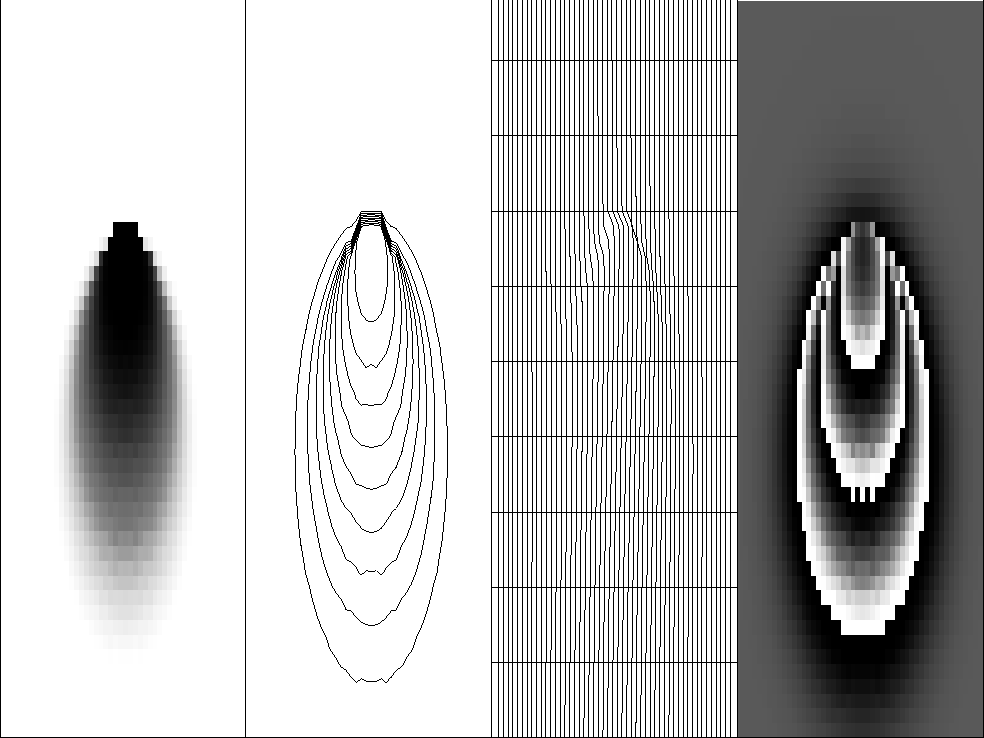![[*]](http://sepwww.stanford.edu/latex2html/cross_ref_motif.gif) is opposite that of the Vesuvius data.
This means that the radar altitude of Vesuvius is
not measured from sea level but from the satellite level.
is opposite that of the Vesuvius data.
This means that the radar altitude of Vesuvius is
not measured from sea level but from the satellite level.

![[*]](http://sepwww.stanford.edu/latex2html/cross_ref_motif.gif) might be such
that the mountain blocks some of the landscape behind it.
This leads to the interesting possibility
that the phase function must have a discontinuity
where our viewing angle jumps over the hidden terrain.
It will be interesting to discover whether
we can estimate functions with such discontinuities.
I am not certain that the Vesuvius data
really has such a shadow zone, so I prepared the synthetic
data in Figure
might be such
that the mountain blocks some of the landscape behind it.
This leads to the interesting possibility
that the phase function must have a discontinuity
where our viewing angle jumps over the hidden terrain.
It will be interesting to discover whether
we can estimate functions with such discontinuities.
I am not certain that the Vesuvius data
really has such a shadow zone, so I prepared the synthetic
data in Figure ![[*]](http://sepwww.stanford.edu/latex2html/cross_ref_motif.gif) ,
which is noise free and definitely has one.
,
which is noise free and definitely has one.
We notice the polarity of the synthetic data in ![[*]](http://sepwww.stanford.edu/latex2html/cross_ref_motif.gif) is opposite that of the Vesuvius data.
This means that the radar altitude of Vesuvius is
not measured from sea level but from the satellite level.
is opposite that of the Vesuvius data.
This means that the radar altitude of Vesuvius is
not measured from sea level but from the satellite level.

 |